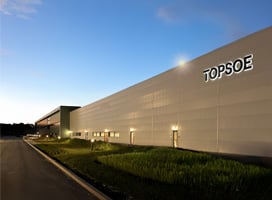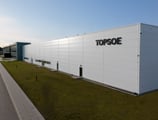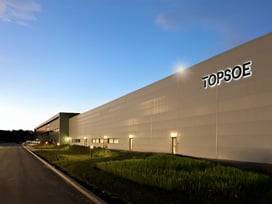Road vehicles currently account for three-quarters of the world’s transportation emissions.¹ As the energy transition gathers pace, sales of battery electric vehicles are surging: in 2023, nearly one in five cars sold around the world was electric.² The International Energy Agency has predicted that one in four vehicles on the road in 2035 will be an EV.³ That means the automotive industry is facing rapid growth in demand for affordable, powerful rechargeable batteries, as well as the need for more sustainable and cost-effective materials for those batteries.
We at Topsoe have spent more than a decade developing lithium nickel manganese oxide (LNMO) materials for lithium-ion batteries. LNMO fits into EV batteries and is optimized to bring down cost and maintain powerful performance.
In parallel with this development, we have also been working on ramping up the production process to an industrial scale. In 2024 we inaugurated a large-scale LNMO material production industrialization pilot in Frederikssund, Denmark, with a design capacity of 200 tonnes a year.
.png)










